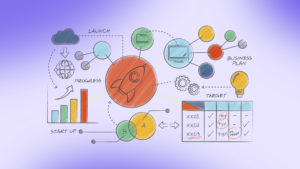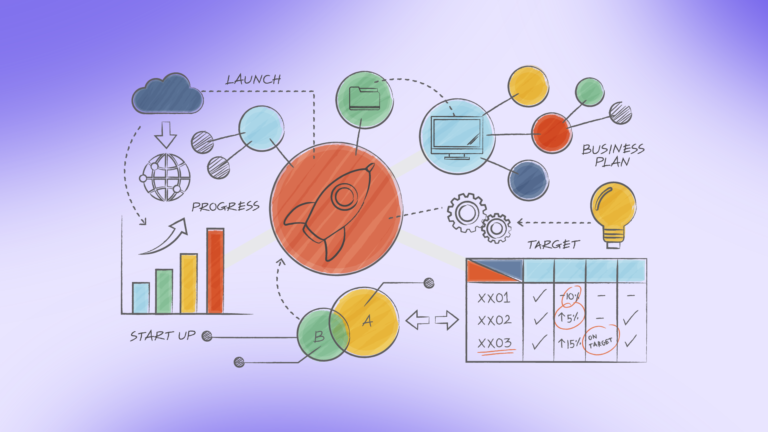In this article, we will delve into three prominent Agile methodologies—Scrum, Kanban, and Extreme Programming (XP)—and explore their applications within digital agencies.
Understanding Agile Development
Agile development is rooted in a set of principles that prioritize iterative progress, customer collaboration, and adaptability. Unlike traditional methodologies that often adhere to a linear process, Agile embraces change and fosters continuous improvement. For digital agencies, adopting Agile methodologies offers numerous advantages, including faster delivery times, enhanced responsiveness to client needs, and improved product quality. These benefits are particularly crucial for agencies engaged in software product development, as they facilitate the effective management of complex projects.
Scrum Methodology
Definition & Key Features
Scrum is an Agile framework designed to deliver incremental value through short, time-boxed iterations known as sprints. The Scrum team comprises three essential roles:
- Scrum Master: Facilitates the Scrum process and removes obstacles.
- Product Owner: Represents the client’s interests and manages the product backlog.
- Development Team: Self-organizes to deliver product increments.
Core practices within Scrum include:
- Sprints: Typically lasting 2-4 weeks, where a specific set of features is developed.
- Sprint Planning: The team outlines the work to be accomplished during the sprint.
- Daily Stand-ups: Brief meetings to discuss progress and challenges.
- Sprint Review: A session to review completed work with stakeholders.
- Sprint Retrospective: A reflection on the sprint to identify areas for improvement.
Advantages of Scrum in Software Product Development
Scrum enhances teamwork and transparency, providing better predictability and enabling teams to adapt quickly to changes. It is particularly effective for projects with evolving requirements and multiple stakeholders.
Real-World Applications
Digital agencies frequently utilize Scrum to manage complex projects and client requests. For instance, a marketing agency might implement Scrum to handle various client campaigns, ensuring each campaign is delivered incrementally and adjusted based on client feedback.
How Agencies Can Implement Scrum
To adopt Scrum, agencies should begin by training their teams on Scrum principles and practices. Tools like Jira or Trello can facilitate Scrum processes, helping teams manage backlogs and track progress effectively.
Kanban Methodology
Definition & Key Features
Kanban is a visual system that emphasizes continuous delivery and workflow efficiency. Its core concepts include:
- Kanban Board: A visual representation of work items with columns representing different stages of the process.
- WIP Limits: Limits on the number of tasks in each stage to prevent bottlenecks.
- Continuous Flow: Work items move through the process without fixed iterations.
Advantages of Kanban in Software Product Development
Kanban provides a clear view of workflow and progress, helping teams identify and address bottlenecks. It allows for flexibility in responding to changing priorities without the constraints of rigid sprints.
Real-World Applications
Kanban is particularly well-suited for agencies with dynamic project requirements. For example, a web development agency might use Kanban to manage tasks across multiple projects, ensuring efficient resource allocation and quick responses to new client needs.
How Agencies Can Implement Kanban
Agencies can initiate Kanban by setting up a Kanban board to visualize work items and establish WIP limits. Tools like Kanbanize and Monday.com can support Kanban implementation, making it easier to manage workflows and track progress.
Extreme Programming (XP)
Definition & Key Features
Extreme Programming (XP) is an Agile methodology that emphasizes engineering practices and customer satisfaction. Key practices include:
- Pair Programming: Two developers collaborate on the same code to enhance quality and teamwork.
- Test-Driven Development (TDD): Writing tests before coding to ensure functionality and minimize bugs.
- Continuous Integration: Regularly integrating code changes to detect issues early.
- Refactoring: Continuously improving code to enhance performance and maintainability.
Advantages of XP in Software Product Development
XP promotes high-quality code and rapid feedback, resulting in superior software quality and faster development cycles. It is particularly beneficial for projects with complex requirements and high stakes.
Real-World Applications
Digital agencies focused on delivering high-quality software or custom solutions can greatly benefit from XP. For instance, a software development agency working on a new application might employ XP practices to ensure a robust and adaptable codebase that responds to client feedback.
How Agencies Can Implement XP
Agencies can introduce XP practices by starting with pair programming and adopting TDD. Tools like Jenkins for continuous integration and various refactoring tools can support XP practices in daily development activities.
Agile development methodologies, including Scrum, Kanban, and Extreme Programming, offer powerful frameworks for software product development. By embracing these methodologies, digital agencies can enhance their project management capabilities, improve collaboration, and deliver high-quality software that meets client needs. As the software landscape continues to evolve, adopting Agile practices will be crucial for agencies aiming to stay competitive and responsive in a fast-paced environment.





























